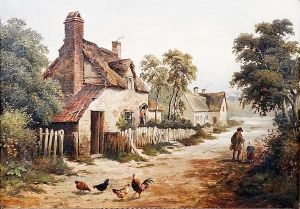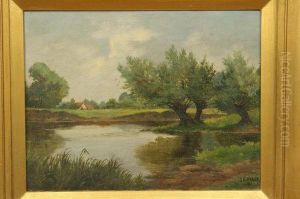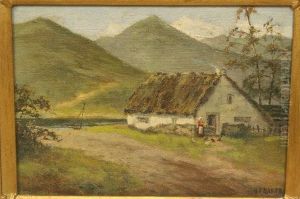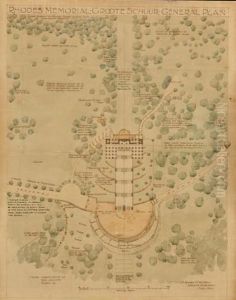Herbert Baker Paintings
Sir Herbert Baker was a prominent British architect, remembered for his role in shaping the architectural landscape of South Africa and India during the late 19th and early 20th centuries, as well as for his substantial contributions to British architecture. Born on June 9, 1862, in Cobham, Kent, England, Baker was educated at Tonbridge School and later apprenticed under influential architect Arthur Blomfield.
Baker's career took a significant turn when he moved to South Africa in 1892, where he became associated with Cecil Rhodes, the British imperialist and mining magnate. This connection greatly influenced his work, and he was responsible for designing numerous buildings in a style that combined British Imperial architecture with local South African influences. Among his notable works in South Africa are the Union Buildings in Pretoria, completed in 1913, which serve as the official seat of the South African government, and Groote Schuur in Cape Town, the residence of the Prime Minister of South Africa.
In 1912, Baker returned to England and established a successful practice. During World War I, he became involved in designing war cemeteries in France for the Imperial War Graves Commission. Post-war, his work continued to garner attention, and he was commissioned to work on various significant projects, including the rebuilding of the Bank of England and India House in London.
Baker's influence extended to India as well, where he worked alongside Sir Edwin Lutyens in designing New Delhi, the new capital of British India. His contributions included the Parliament House and the Secretariat Building. Baker's architectural style was characterized by his use of traditional motifs, grandiose city planning, and a penchant for incorporating local building materials and techniques.
He was knighted in 1926 for his contributions to architecture and his involvement in the design of New Delhi. Baker's legacy is marked by his successful fusion of different architectural styles, which created a distinctive imperial aesthetic that left a lasting impact on the regions where he worked. Sir Herbert Baker passed away on February 4, 1946, in Cobham, leaving behind a rich architectural heritage that continues to be studied and admired.




